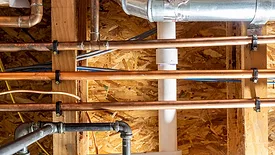Home » Keywords: » pipe sizing
Items Tagged with 'pipe sizing'
ARTICLES
Codes Corner | Tom Roberts
A collaborative approach for the 21st Century.
Read More
Professional Plumbing Engineer Viewpoints | James Dipping
Advancing sustainability in commercial plumbing systems
The industry needs to adopt more modern domestic water pipe sizing practices.
November 20, 2024
Strategic Plumbing Insights | Christoph Lohr
The year ahead: Right-sizing of plumbing systems
IAPMO’s Water Demand Calculator provides an industry tool for correctly sizing pipes.
February 5, 2024
David Dexter: The ANSI process versus governmental process
A plumbing professional engineer’s view.
December 7, 2022
James Dipping: A deep dive into water pipe sizing
Selecting pipe size is not as simple as looking at a chart.
November 8, 2022
Keep your content unclogged with our newsletters!
Stay in the know on the latest plumbing & piping industry trends.
JOIN TODAY!Copyright ©2025. All Rights Reserved BNP Media.
Design, CMS, Hosting & Web Development :: ePublishing













